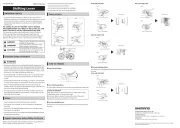Shimano PD-9000 Manual
Shimano
Ikke kategoriseret
PD-9000
| Mærke: | Shimano |
| Kategori: | Ikke kategoriseret |
| Model: | PD-9000 |
Har du brug for hjælp?
Hvis du har brug for hjælp til Shimano PD-9000 stil et spørgsmål nedenfor, og andre brugere vil svare dig
Ikke kategoriseret Shimano Manualer

11 Januar 2025

30 December 2025

7 Oktober 2024

7 Oktober 2024

6 Oktober 2024

6 Oktober 2024

6 Oktober 2024

4 Oktober 2024

1 Oktober 2024

1 Oktober 2024
Ikke kategoriseret Manualer
- HiFi ROSE
- JMAZ
- Creality3D
- McIntosh
- Lectrosonics
- Sirius
- Tellur
- Canary
- Artec
- Aqua-Vu
- Origin Storage
- GVM
- Grosfillex
- ATN
- Edision
Nyeste Ikke kategoriseret Manualer

1 December 2025

1 December 2025

1 December 2025

1 December 2025

1 December 2025

1 December 2025

1 December 2025

1 December 2025

1 December 2025

1 December 2025
